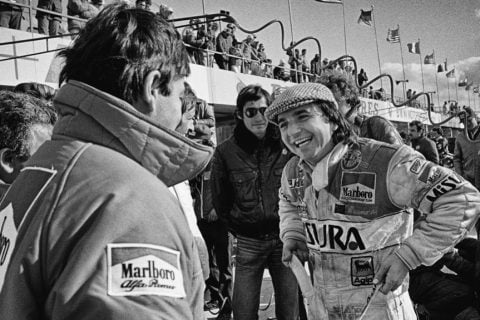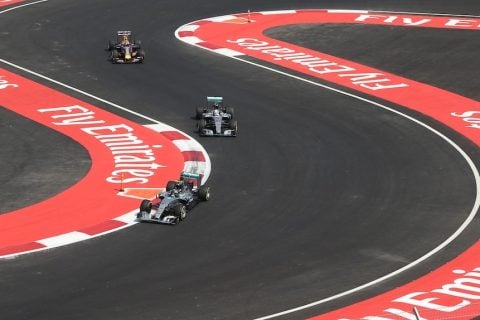While it might seem that Pirelli is returning F1 drivers to the same situation they faced in 2011, the company says, this time the “cliff” will be managed differently. The new tires will have a definitive end of life, but will perform consistently prior to reaching it. Drivers should be able to extract the same lap time from every lap until the compounds are worn out.
Obviously the harder they push, the sooner the end will be reached; however with different suspension settings (and driver talent / styles) between the teams, each car / driver combination will reach that situation at a different point in the race. Thus, drivers who conserve their tires too much face the risk of being passed by the more aggressive and/or sensitive drivers who push on the limit until they sense the first signs of the cliff, and then bolt in for a change. We expect there will be a number of early season races which could see surprise podium finishers until this new strategic balance of “wear versus speed” is recalibrated in the drivers’ right feet and their team’s race pace calculators.
We hope for a more overly aggressive and unpredictable season that sees these gladiators just go for it; attacking and sliding if need be behind cars knowing that after a certain number of laps their opponent will need to come in because their tyres will have reached their “cliff” as well.
Pirelli has not finished with their F1 tire “reformation”, as they have put discussions on 2017 tyres at the top of the rules agenda; a meeting between Pirelli and all the parties, including the FIA, has been scheduled to take place in Milan this week. We think this meeting is the perfect time for drivers and teams to reintroduce demands for stronger tyres (to match the expected changes in the F1’s rules formula to increase more overall mechanical grip and downforce) directly to Pirelli.




